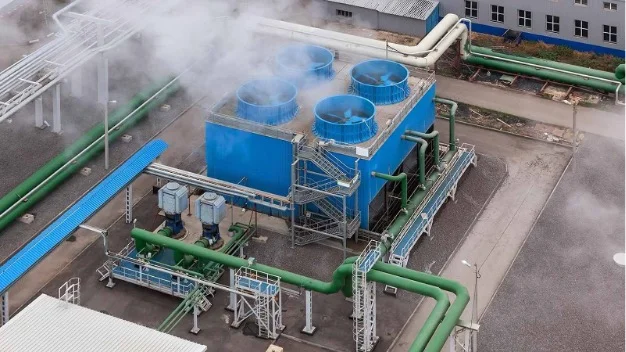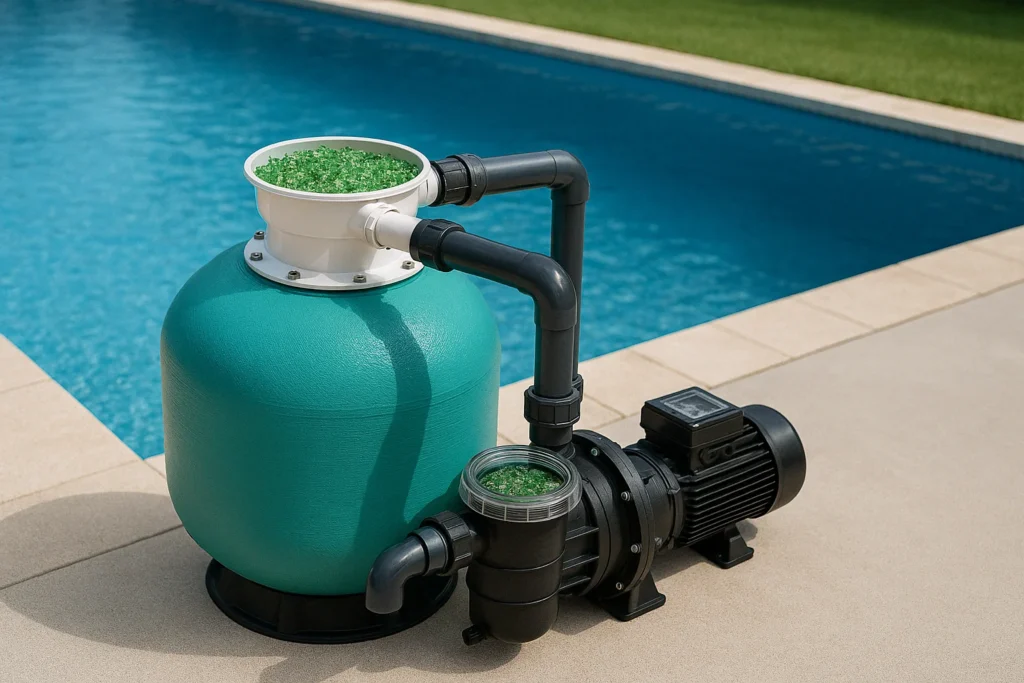
Biofilm formation in water distribution systems is a silent yet pervasive issue that significantly impacts the efficiency, performance, and longevity of these systems.
These slimy colonies of microorganisms adhere to the inner surfaces of pipes, water storage tanks, and other infrastructure, creating an ideal environment for harmful bacteria, viruses, and pathogens to flourish.
While biofilms might appear innocuous, their adverse effects on water systems and associated costs are far-reaching.
The Adverse Impacts of Biofilms
- Efficiency Loss: Biofilms act as insulating layers within pipes, reducing the hydraulic efficiency of water distribution systems. This leads to increased energy consumption as pumps work harder to maintain water flow and pressure. The reduced flow can also impact the delivery of water to end users, particularly in large systems.
- System Performance: Over time, biofilms can cause blockages and corrosion, compromising the integrity and performance of the water system. Corrosion can lead to leaks and the release of harmful metals into the water supply, further exacerbating health risks. Blocked pipelines and reduced water flow often result in costly downtime for maintenance and repairs.
- Shortened System Life: The constant presence of biofilms accelerates wear and tear on infrastructure. Pipes, valves, and tanks deteriorate faster, necessitating frequent repairs and replacements. This not only increases the capital cost but also disrupts operations, causing inconvenience and potential supply chain interruptions.
- Increased CAPEX and OPEX: The capital expenditure (CAPEX) associated with replacing corroded or damaged infrastructure, combined with the operational expenditure (OPEX) of additional energy usage and maintenance, significantly escalates costs for operators. Furthermore, regulatory fines or penalties due to water quality issues add another layer of financial burden.
- Health Hazards: Biofilms harbour pathogenic microorganisms, including Legionella, E. coli, and Pseudomonas, posing severe health risks. Contaminated water can lead to outbreaks of waterborne diseases, resulting in public health crises and regulatory penalties. The presence of biofilms can also compromise the effectiveness of residual disinfectants, further endangering public health.
- Impact on Industrial Applications: For industries relying on clean water, such as food and beverage, pharmaceuticals, and healthcare, biofilms can disrupt operations and compromise product quality. Equipment fouling due to biofilms leads to inefficiencies, higher cleaning costs, and potential regulatory violations.
Chlorine Dioxide: A Proven Solution to Biofilm Challenges
Chlorine dioxide (ClO2) has emerged as one of the most effective solutions for combating biofilms in water distribution systems. Available in various forms—powder, tablets, or on-site generators—ClO2 offers unparalleled benefits in biofilm eradication and prevention.
- Broad-Spectrum Biocidal Action: Chlorine dioxide penetrates biofilm matrices and effectively eliminates the microorganisms within. Unlike traditional disinfectants, ClO2 targets the biofilm structure itself, ensuring complete eradication. This ability to disrupt biofilms at their core makes it a game-changer in water treatment.
- Preventive Capabilities: Regular dosing with ClO2 inhibits biofilm reformation. By preventing biofilms from taking root, ClO2 ensures the long-term health of water systems. Consistent application minimizes the risk of microbial regrowth, reducing the need for frequent interventions.
- Non-Corrosive Nature: When used in controlled concentrations, chlorine dioxide does not corrode pipes or infrastructure, unlike other chlorine-based disinfectants. This feature extends the lifespan of water systems. Operators can maintain the structural integrity of their systems while ensuring effective disinfection.
- Enhanced Water Quality: ClO2 neutralizes organic and inorganic impurities in water, improving taste and odour. It also eliminates harmful microorganisms, ensuring safe and clean water for end users. This makes it particularly valuable for municipal systems and industries requiring high-quality water.
- Cost-Effectiveness: Despite its powerful action, ClO2 is cost-effective. Reduced energy usage, longer-lasting infrastructure, and fewer disease outbreaks translate into significant savings in CAPEX and OPEX. Additionally, the versatility of ClO2 in addressing multiple issues simultaneously makes it a preferred choice for operators.
- Adaptability: Chlorine dioxide can be used in various forms depending on the specific needs of the system. Powder and tablet forms offer convenience and ease of transport, while on-site generators provide a continuous and customizable supply. This adaptability ensures that ClO2 can be effectively integrated into diverse water treatment systems.
Ensuring Safe Water for all with ClO2
The persistent challenge of biofilms in water distribution systems demands a robust and reliable solution. Chlorine dioxide stands out as a versatile and highly effective disinfectant that addresses the root cause of biofilm-related issues. By integrating ClO2 into water treatment protocols, operators can enhance system efficiency, safeguard infrastructure, and deliver safe water to communities.
With its ability to eradicate biofilms, prevent reformation, and improve overall water quality, chlorine dioxide is indispensable for modern water management. By choosing ClO2, we ensure not just the longevity of our water systems but also the health and safety of those who depend on them.
Let’s embrace chlorine dioxide—in powder, tablet, or generator form—to secure a future of safe, clean, and efficient water systems.





